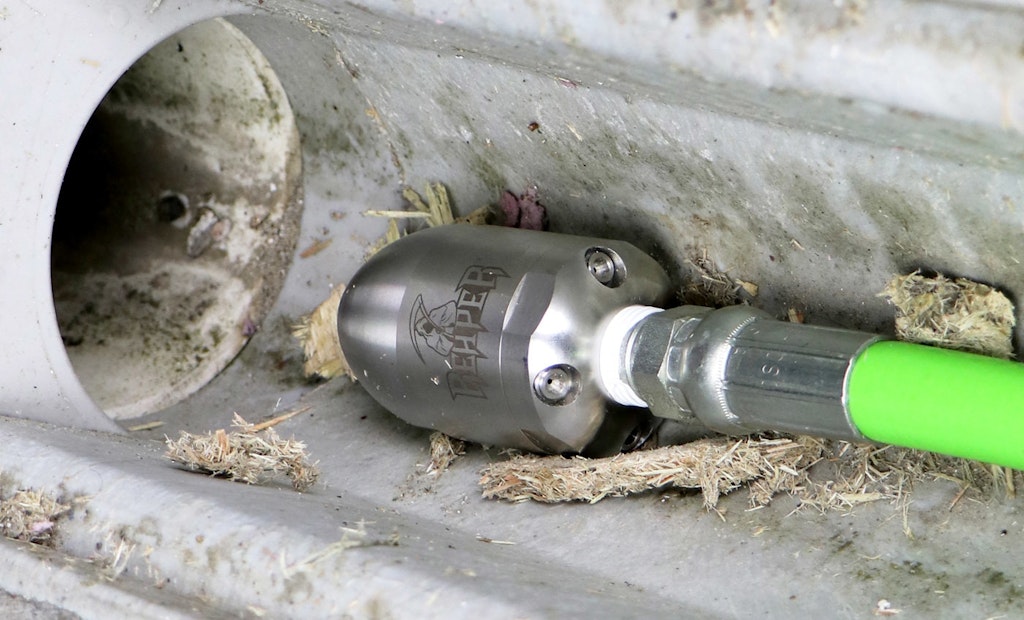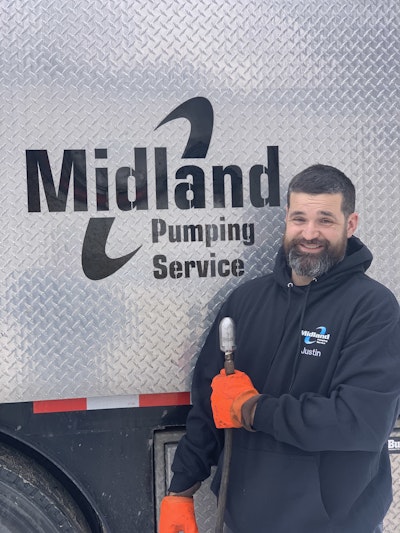
Hydra-Flex offers five different Reaper models; Midland owns a 9 gpm model with a 3/8-inch inlet connection, designed for 3- to 6-inch-diameter lines. The rotating front jet creates a 24-degree cone of coverage.
Lines clogged with grease offer a tough challenge for drain and grease trap cleaners like Justin Elge, a technician at Midland Pumping Service in Omaha, Nebraska. But the Reaper, a powerful jetting nozzle made by Hydra-Flex, helps knock those difficult jobs down to size — and...






